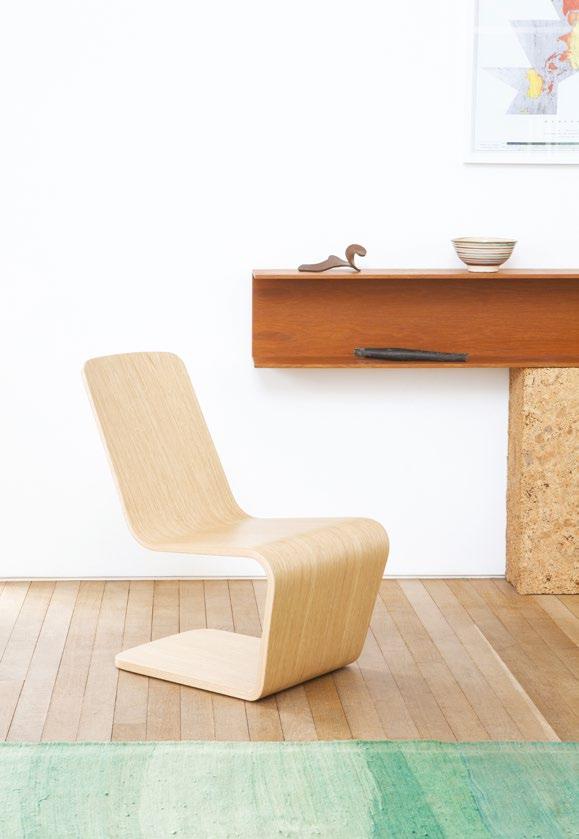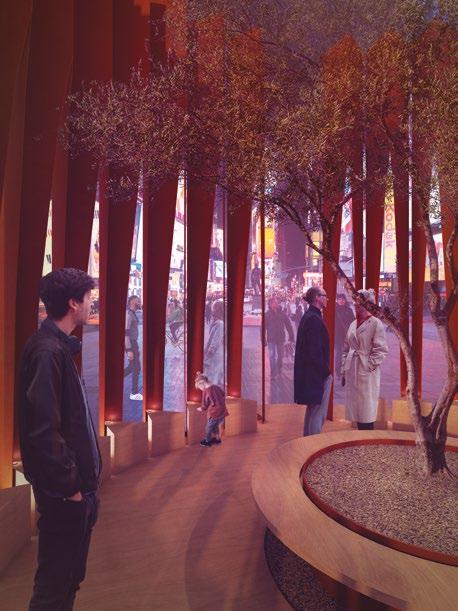
11 minute read
In the Mix
In the Mix
The Great Refresh
Salone del Mobile returns to its old self.
Text by Marianela D’Aprile
SALONE DEL MOBILE, the world’s largest contemporary furniture expo, hasn’t been itself for some time. After canceling the event outright in 2020, organizers mounted a more modest iteration, paradoxically called Supersalone, in 2021. COVID fears persisted, however, and much of the design world continued to feel adrift.
With its 2022 edition, to be held in Milan from June 7 to 12, the event is reclaiming both its venue at the Fieramilano fairgrounds and its role in creating connections between designers, architects, and other industry professionals. At a press conference in mid-March, president Maria Porro celebrated Salone’s return and that of sister exhibition series Salone Satellite, which highlights newer talents. She also hinted at changes in the program direction that respond to consumer preferences, cultivated over the course of the pandemic, as well as to the growing climate crisis.
“It was a big stress test for our houses,” Porro told AN. “Functions that were usually done outside—like working, studying, cooking—we are now doing them at the same table, sitting at the same chair. We understood that maybe we didn’t dedicate the right attention to the objects surrounding us.”
In that vein, the designs teased at the March launch centered upon spaces for caring for the self, like the kitchen and the bathroom. Speaking on behalf of Gessi, a 30-yearold brand based in Serravalle Sesia, northeast of Milan, commercial director Diego Romano described the bathroom as an “emotional space” where “people regenerate every morning.” EuroCucina, a subset of Salone that will coincide with this year’s event, promises to explore the theme in greater depth. Erika Rastelli, corporate manager of Italian furniture manufacturer ARAN World, described the company’s EuroCucina exhibition (a collaboration with renowned chef
Davide Oldani) as a response to a spike in home cooking brought about by the pandemic.
Other companies stressed the importance of backyard patios, terraces, and other domestic exteriors. Monica Pedrali, CEO of the nearly 60-year-old Italian furniture company Pedrali, spoke about “paying particular attention to design so as to give even outdoor spaces a special quality”; she said the company’s history of manufacturing metal furniture has informed three new outdoor collections to be unveiled at the fair in June, including one designed by Italian studio CMP Design. On behalf of Baxter, exporter Gloria Cazzaniga presented new furniture collections designed to coordinate in style and color scheme across indoor and outdoor spaces.
In addition to reacting to the new conditions created by the pandemic, presentations by Salone organizers as well as manufacturers and designers highlighted how the looming climate crisis is changing the furniture design landscape. At the press conference, Porro emphasized Salone’s new guidelines, which encourage exhibitors to use recycled and upcycled materials for their booths; she noted how such measures helped to shrink Supersalone’s carbon footprint to nearly zero. Architect Mario Cucinella unveiled his design for an approximately 4,600-square-foot educational installation meant to showcase circular economy concepts as well as sustainable materials. Comprising thin layers of wood cut into undulating shapes and stacked to resemble topographical lines, the platform is both architecture and furniture, giving people a place to sit and subdividing the space into exhibitor stalls.
Meanwhile, companies made sure to highlight the measures they have taken to reduce their environmental impact. Marianna Fantoni, technical director of Fantoni, shared the company’s extensive energy-producing and energy-saving practices, including eight hydroelectric power plants that generate 60,000,000 kWh per year and three biomass incinerators that cover over 70 percent of the Fantoni plant’s heating needs. Dirk Wynants, CEO of Belgian furniture and design company Extremis, spoke of a different kind of sustainability, more focused on the longevity of furniture pieces. Referring to a new product for which there is no obvious market yet—a changeable-height table called AMAi—Wynants said: “Something like this will take a lot of time to be accepted by the market, but I think it’s worthwhile when it comes to discussions of ecology. We don’t want to make products that last just three years or five years—we want to make products that stay relevant for a very long time.”
Porro hopes that this year’s Salone, its 60th edition, will act like a “great piazza” and help designers, architects, and the public build bonds. The overall ethos feels optimistic and refreshed, which might be a product of Porro’s background—she is the youngest-ever president of Salone, the first woman to hold the position, and, crucially, a designer herself.
“There are great expectations about Salone,” Porro said. “In years past, Salone was becoming bigger and bigger, with more and more people coming, bigger spaces, and bigger parties. It was more a matter of quantity and size. The past three years have changed our point of view, and I think the right point of view in this moment is to think about quality and to build on the value of quality.” ●
facing page In March, Salone del Mobile invited international press to preview the contents of its 2022 edition. bottow Italian architect Mario Cucinella’s “Design with Nature” installation reflects Salone’s commitment to sustainability.
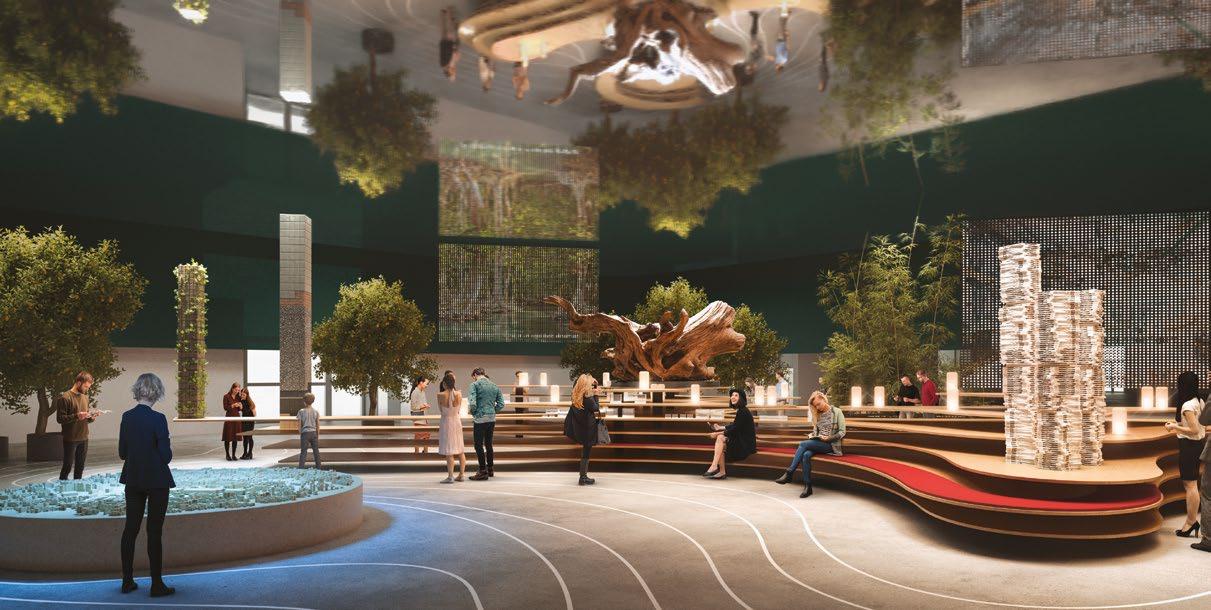

In the Mix
Goes to Show
For the heads of New York’s newest design showrooms, city life has returned—for good.
Text by Sophie Aliece Hollis
LIKE MOST RETAIL-RICH DISTRICTS across the globe, Manhattan’s Soho and Tribeca neighborhoods were hit hard by the pandemic, prompting the closure of many retailers and a quick pivot to the digital marketplace. This transition was particularly difficult for design showrooms, whose ultra-custom products, often considerable investments in and of themselves, require far more attention to detail than can be gleaned from a web-resolution image viewed on a smartphone. Fortunately, energy seems to have returned to downtown, as a slew of new design showrooms have cropped up alongside stalwarts that weathered the storm. We checked in with five global brands that recently debuted storefronts to hear why Soho and Tribeca felt like the right fit and what they hope to achieve in these gorgeously designed outposts.
SAH Why locate your New York flagship in Soho over the showroom-rich neighborhoods of Nomad/Flatiron and Midtown?
Knud Erik Hansen, CEO, Carl Hansen & Søn
The neighborhood has a diversity of offerings, from small restaurants to fashion shops, fostering young
facing page Designed in conjunction with Aesthetíque, Juniper Design’s new Soho showroom provides a full hospitality experience while displaying the company’s luxury lighting products.
bottom The Austrian luxury kitchen manufacturer Lanserring opened its first U.S. location in Soho this past fall. artists and a positive atmosphere that I think that our customers agree with and therefore love to visit in their after hours; I don’t think that I have ever visited New York without going to Soho at least once. You come to Soho for leisure—to enjoy either a good meal, the company of your friends, or just to get inspired. In Soho you can relax and take in the smaller, highly specialized shops, like ours.
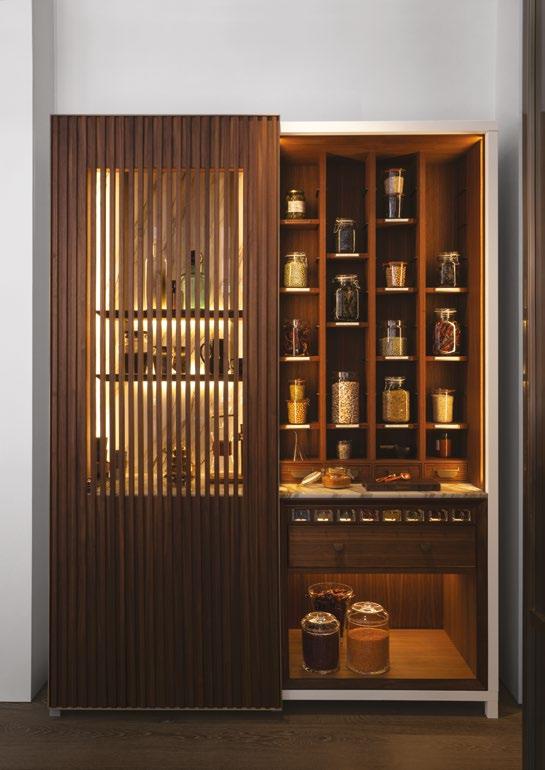
SAH In what ways do these two neighborhoods—Soho and Tribeca—provide your brand opportunities to interact with other creative industries?
Andrew Yang, U.S. managing director, Stellar Works
Tribeca was ideal in so many ways. It is adjacent to Soho and the neighborhood’s many architecture and design firms, showrooms, and museums and galleries. In the last year alone, dozens of galleries have opened just blocks away. Soho is pleasantly commercial, so to have our showroom literally on the border of art and commerce feels right to us. Plus, the proximity to Chinatown also speaks to
Stellar Works’ Asian roots.
Mel Saenz, VP, relationship management, Juniper
There is an interesting mix between fashion, design, food, and art in Soho. Downtown has a neighborhood feel you just can’t emulate in most other
NYC districts. Soho residents and businesses have something of an open-door policy with each other.
This helps in a lot of ways, not least of all when it comes to collaborating on a creative level.
SAH What are your brands’ aspirations moving into this “post-pandemic” landscape?
Bernd Radaschitz, CEO, Lanserring
Our bespoke products must be touched, interacted with, and experienced to be fully appreciated, so we hope that our new second home [in Soho] will become a destination for our friends, colleagues, and clients in the city.
Marcia Speer, president, Poggenpohl U.S.
NYC is resilient, and it was only a matter of time before the city was back. We look forward to a year with a full calendar of showroom events especially targeting the architect and designer community. We offer a unique culinary experience with a live cooktop in the +MODO kitchen located in the center of the studio, where we plan to invite chefs for cooking demos during showroom events throughout the year.
Mel Saenz, VP, relationship management, Juniper
We hope to provide inspiration to our clients by showcasing our lighting in a more experiential way. We would like our clients to feel comfortable reintegrating back into a routine of sourcing and interacting physically with products and people in a more relaxed, low-pressure environment. ●
Destination Design
NYCxDESIGN is back and promises to be bigger than ever.
Text by Sophie Aliece Hollis

WantedDesign Manhattan’s Look Book program acts as an in-person portfolio for high-end North American designers. Anony (top) and Forma Rosa Studio (bottom) are among the 31 designers to display their work this year. AFTER COVID POSTPONEMENTS, cancellations, and downsizings, NYCxDESIGN is returning in full force this May. The tenth-anniversary edition of the festival, which runs from May 10 to 20, will flood New York’s five boroughs with design in all its forms. Expectations are high, with organizers predicting pre-COVID numbers in attendance and dollars. (For reference, the 2019 festival included over 400 events, saw more than 300,000 visitors, and generated $111 million of spending in New York City.)
The festival will serve as a test for the organization’s new direction. At the end of 2020, NYCxDESIGN transitioned from a city-led initiative to a nonprofit, and it has been working ever since to establish year-round programming to engage New York’s broad community of creatives. A handful of key programmatic themes will be highlighted in May—diversity and inclusion, sustainability and climate change, and resilience and equitable recovery, to name a few. Curated itineraries will enable attendees to parse these themes according to their personal interests.
“I like to view the organization as having double bottom-line value,” Elissa Black, NYCxDESIGN’s executive director, told AN Interior. “We’re acting as the center of the spokes in the wheel of the design community by providing a collaborative platform for people from different areas of design to act on things with much broader social effects.”
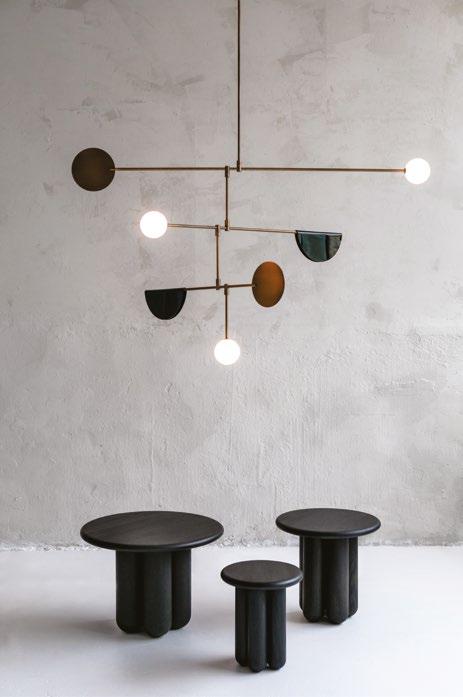
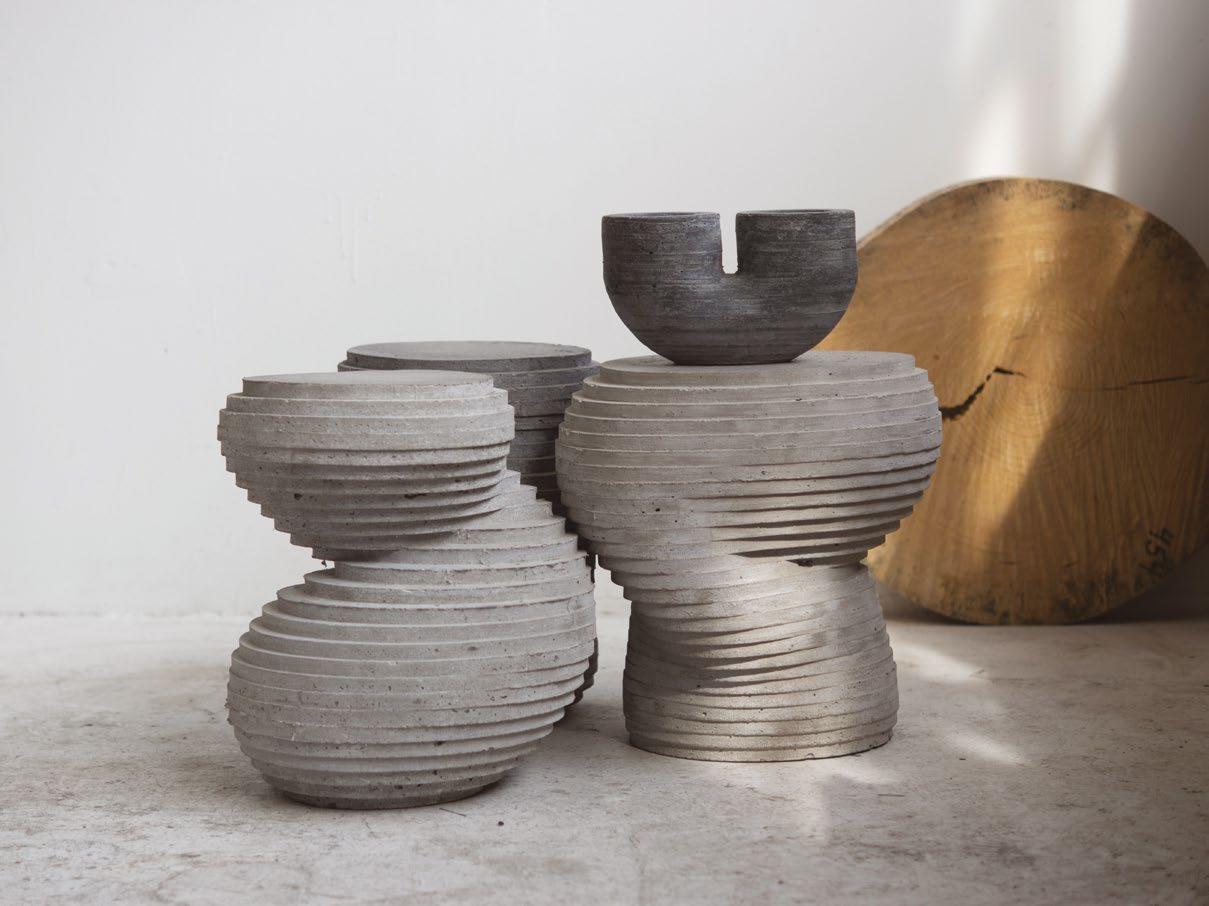
top Spanish designer Gary Fernández’s work will also be featured as part of the Look Book exhibition.
facing page, left The Isokon Plus collection will be exhibited at ICFF 2022.
facing page, right CLB Architects’s "FILTER" installation for Design Pavilion 2022 will act as a quiet oasis in Times Square.
Calendar of Events
May 7–15 Design Pavilion “Open to the Sky” May 10 Unveil of IMPACTxDESIGN installations May 11 Design Showroom Crawl presented by AN Interior and The Architect’s Newspaper May 15 Harlem Open Studio Crawl May 15–17 ICFF and WantedDesign Manhattan
Two of the festival’s anchor events—the International Contemporary Furniture Fair (ICFF) and WantedDesign Manhattan—will once again be staged at the Javits Center. Fifteen exhibitions designed by emerging talents for the ICFF Studio competition will be displayed alongside WantedDesign’s new Schools Exhibit, which presents the work of young design students from across the globe. Wanted will also bring back Launch Pad, a platform for international designers to showcase concepts and prototypes, and Look Book, a dedicated program for high-end North American designers, makers, and studios.
Another anchor event, Design Pavilion, will make design visible to the public through full-scale installations across numerous Manhattan sites. Each installation embodies the event’s 2022 theme, “Open to the Sky,” and will align with Design Talks NOW, a series of conversations, panels, and roundtable discussions.
In addition to its anchor events, the tenth-anniversary edition will roll out a host of special initiatives to facilitate direct engagement with design. The new IMPACTxDESIGN competition, in partnership with Caesarstone, challenged designers to create new opportunities for public gathering; the winning proposals by Karim Rashid and Kickie Chudikova will open in downtown Manhattan and Brooklyn’s DUMBO, respectively, and remain on display through winter 2023. NYCxDESIGN will also introduce the Open Studios program, a series of five guided tours through design studios in Flatiron, Red Hook, the Brooklyn Navy Yard, Long Island City, and Harlem.
And the list goes on. Hundreds of events, exhibitions, activations, and creative partnerships are planned, including AN Interior’s own Design Showroom Cocktail Crawl that will take place throughout Manhattan’s Nomad and Flatiron districts on May 11. Black hopes all of it will further NYCxDESIGN’s original mission of “solidifying New York City as a design capital for the world.” ●
